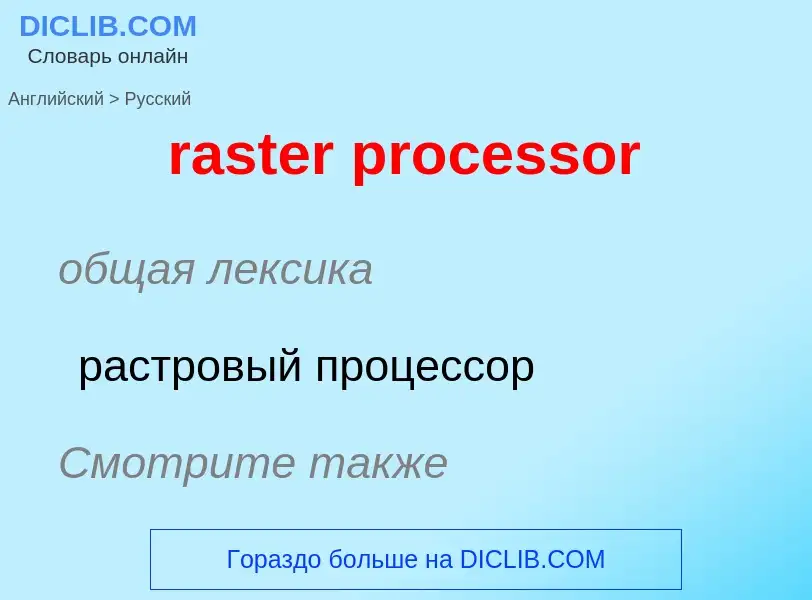Перевод и анализ слов искусственным интеллектом ChatGPT
На этой странице Вы можете получить подробный анализ слова или словосочетания, произведенный с помощью лучшей на сегодняшний день технологии искусственного интеллекта:
- как употребляется слово
- частота употребления
- используется оно чаще в устной или письменной речи
- варианты перевода слова
- примеры употребления (несколько фраз с переводом)
- этимология
raster processor - перевод на русский
общая лексика
RIP
процессор растровых изображений, растровый процессор
программное или аппаратное средство, предназначенное для преобразования векторной графики и текста в растровое изображение, пригодное для печати на принтере или вывода на фотоплёнки. Примеры: RIP-системы фотовывода (изготовления пленок для типографской печати) или интерпретатор языка PostScript, переводящий описание страницы из векторной формы в растровую с разрешающей способностью конкретного устройства
Смотрите также
Смотрите также
общая лексика
растровое изображение
изображение, формируемое на экране в виде массива пикселов разного цвета и яркости
Смотрите также
Смотрите также
Определение
Википедия
A raster image processor (RIP) is a component used in a printing system which produces a raster image also known as a bitmap. Such a bitmap is used by a later stage of the printing system to produce the printed output. The input may be a page description in a high-level page description language such as PostScript, PDF, or XPS. The input can also be or include bitmaps of higher or lower resolution than the output device, which the RIP resizes using an image scaling algorithm.
Originally a RIP was a rack of electronic hardware which received the page description via some interface (e.g. RS-232) and generated a "hardware bitmap output" which was used to enable or disable each pixel on a real-time output device such as an optical film recorder, computer to film, or computer to plate.
A RIP can be implemented as a software module on a general-purpose computer, or as a firmware program executed on a microprocessor inside a printer. For high-end typesetting, standalone hardware RIPs are sometimes used. Ghostscript, GhostPCL, and ColorBurst's Overdrive (for macOS) are examples of software RIPs. Every PostScript printer contains a RIP in its firmware. The RIP chip in a laser printer sends its raster image output to the laser.
Earlier RIPs retained backward compatibility with phototypesetters/photosetters, so they supported the older languages. So, for example, Linotype RIPs supported CORA (RIP30).

![reflection]] (almost free), either before or afterwards, amounts to a 90° image rotation in one direction or the other. reflection]] (almost free), either before or afterwards, amounts to a 90° image rotation in one direction or the other.](https://commons.wikimedia.org/wiki/Special:FilePath/Matrix transpose.gif?width=200)


